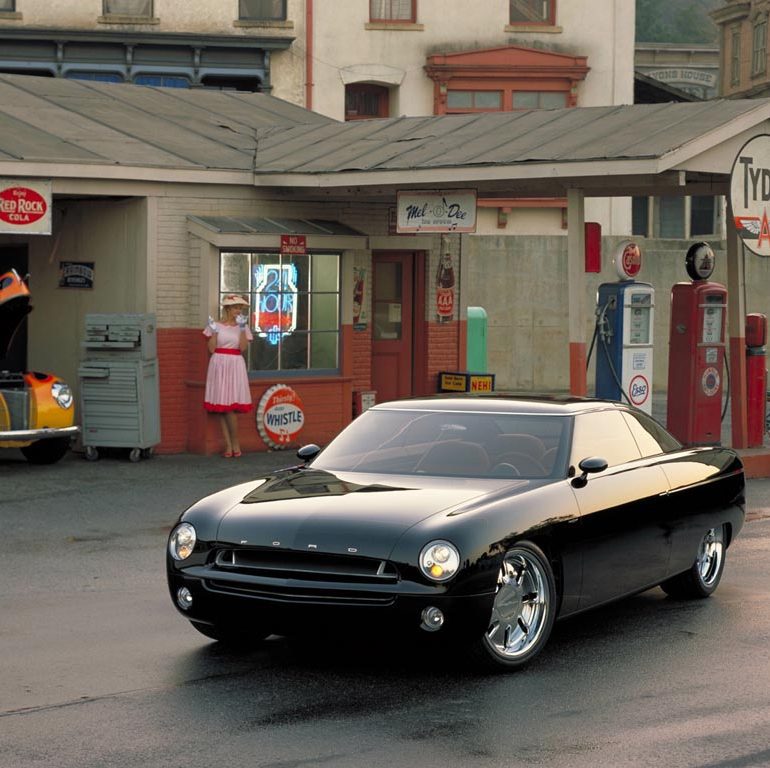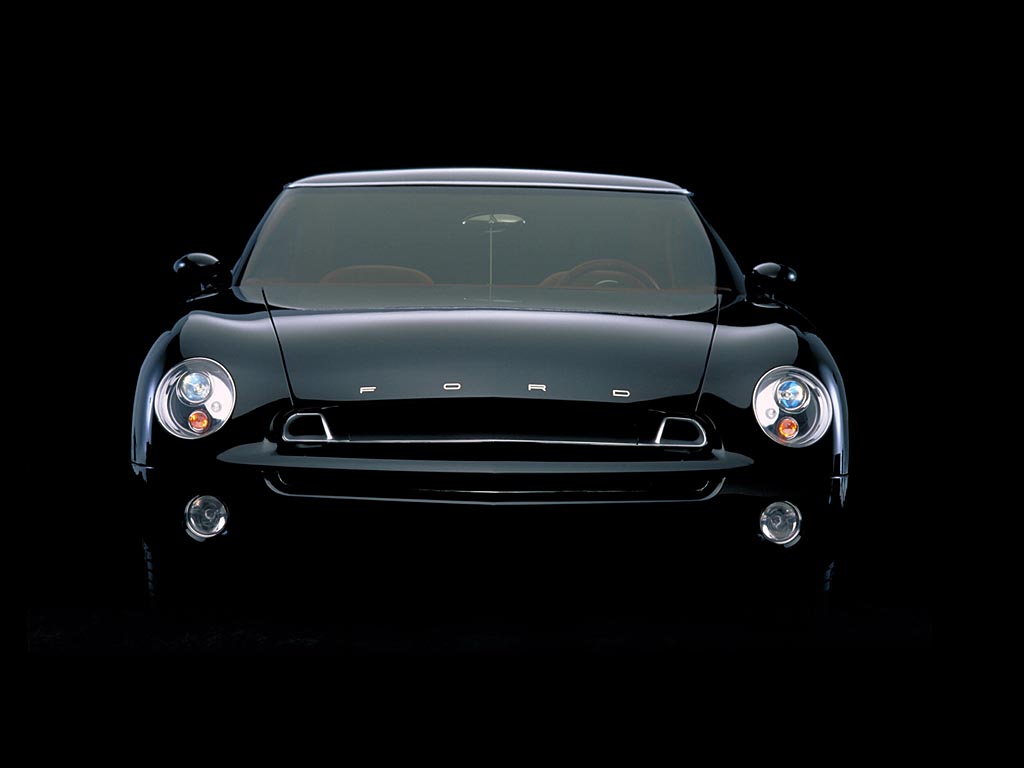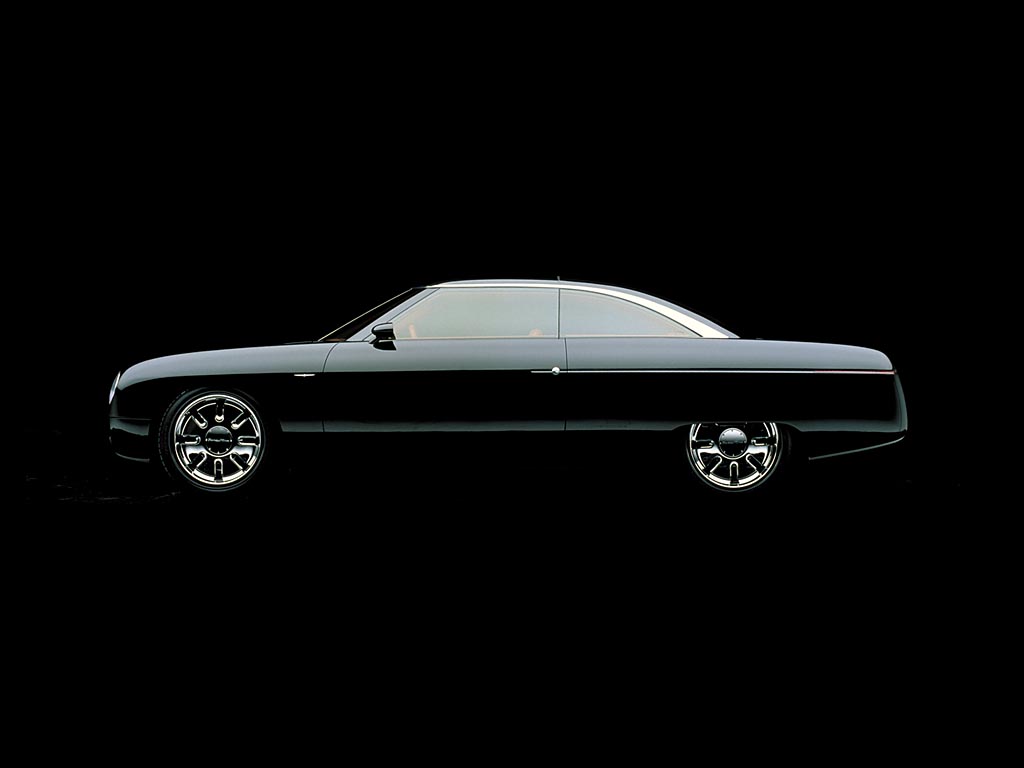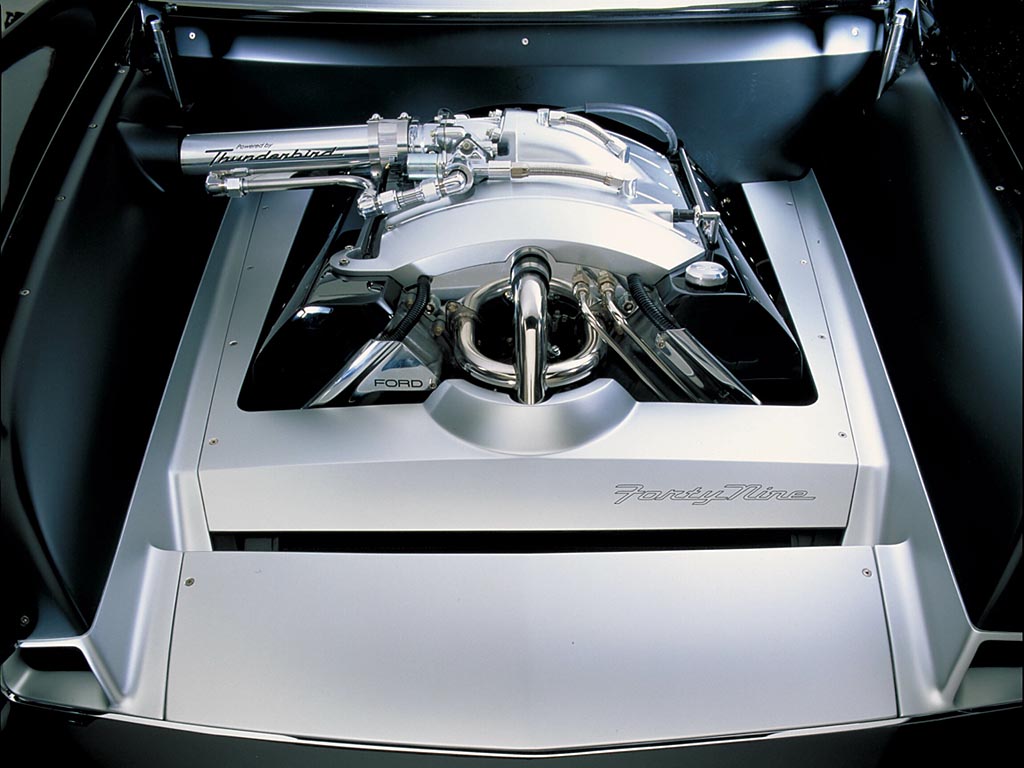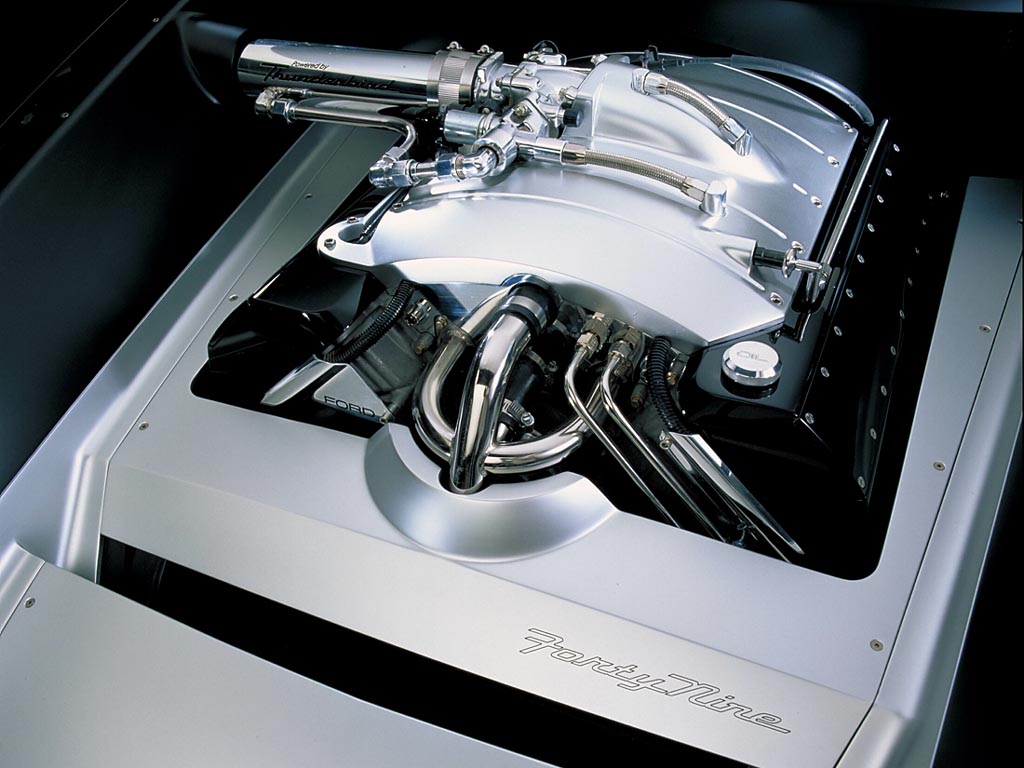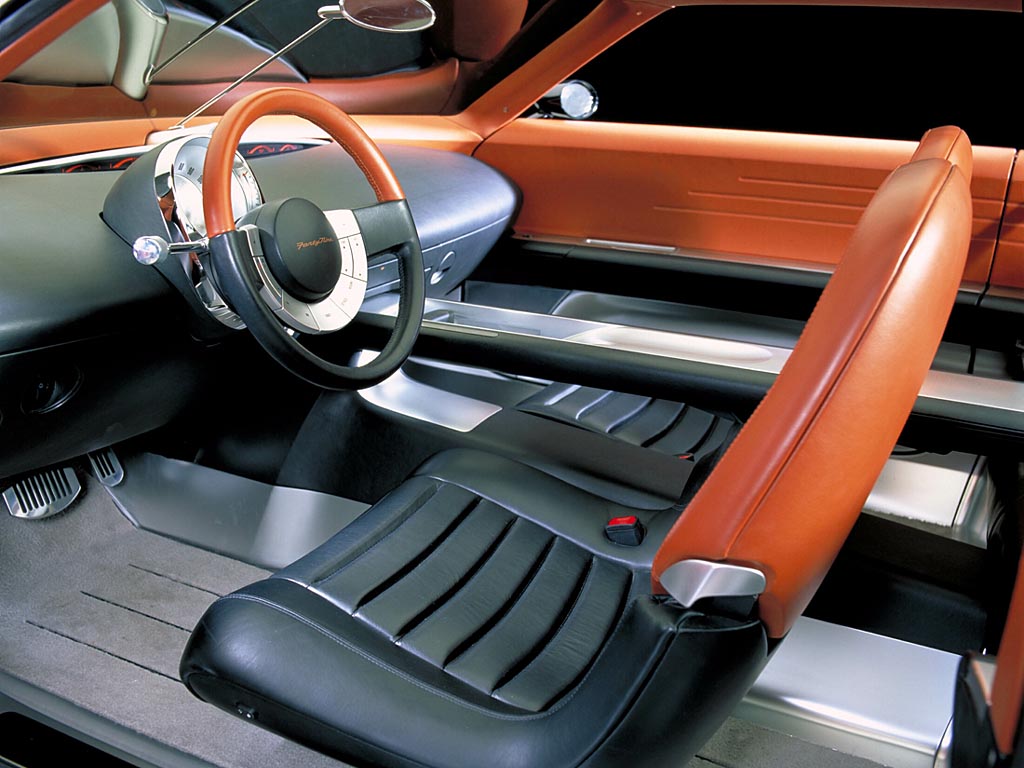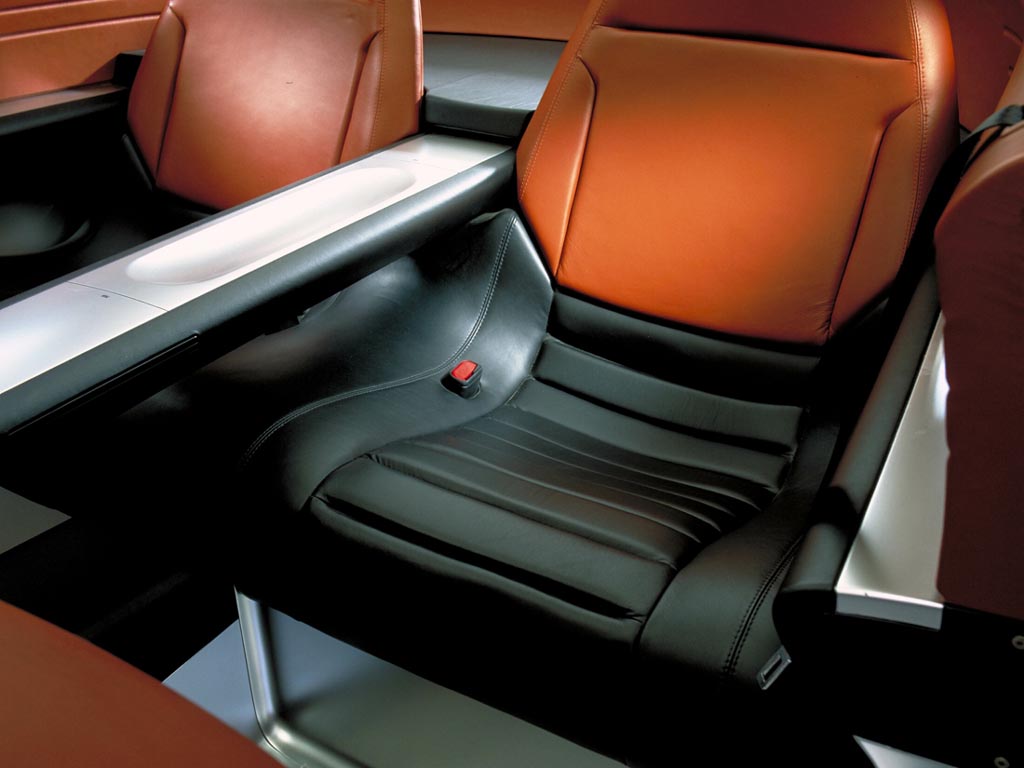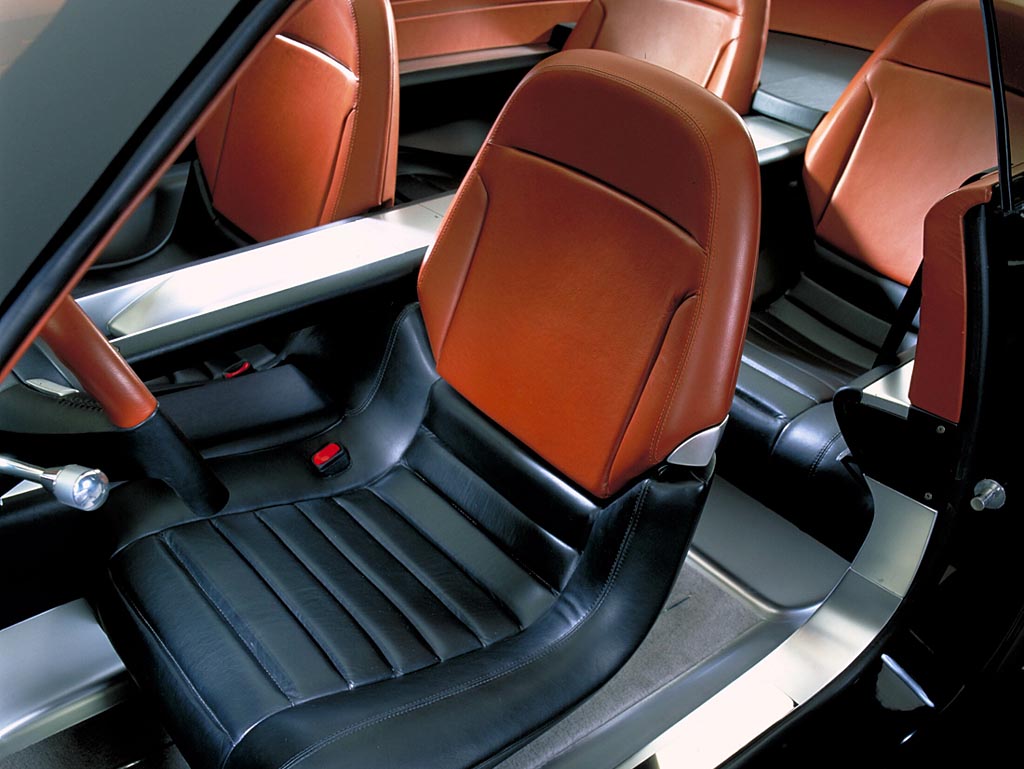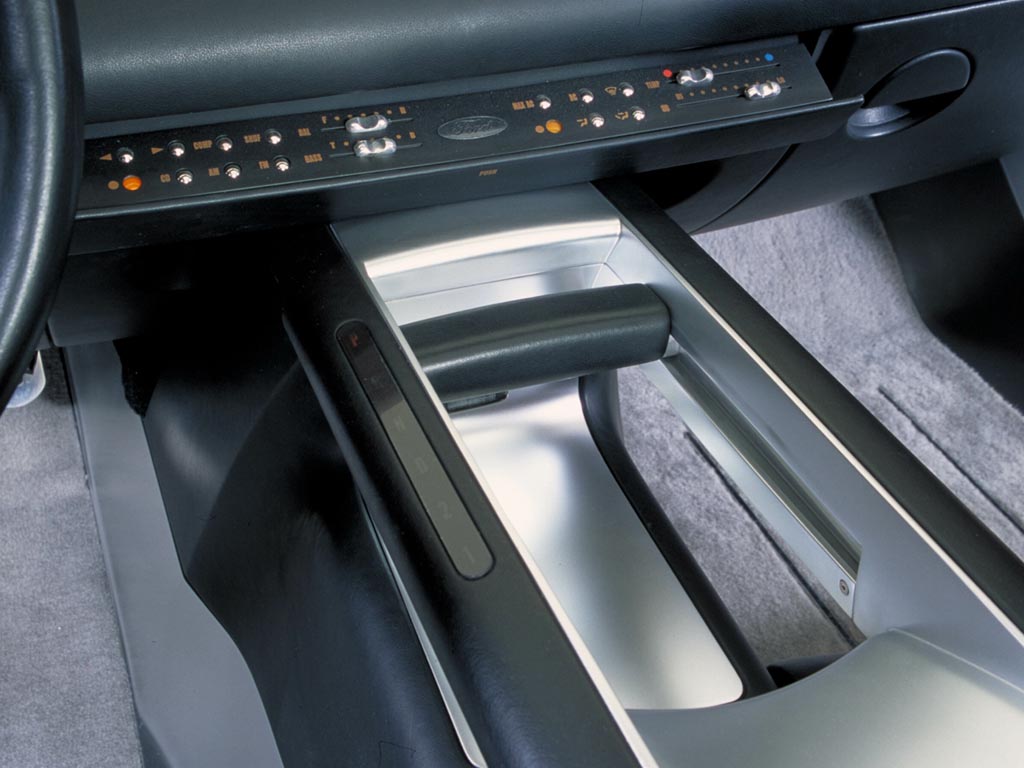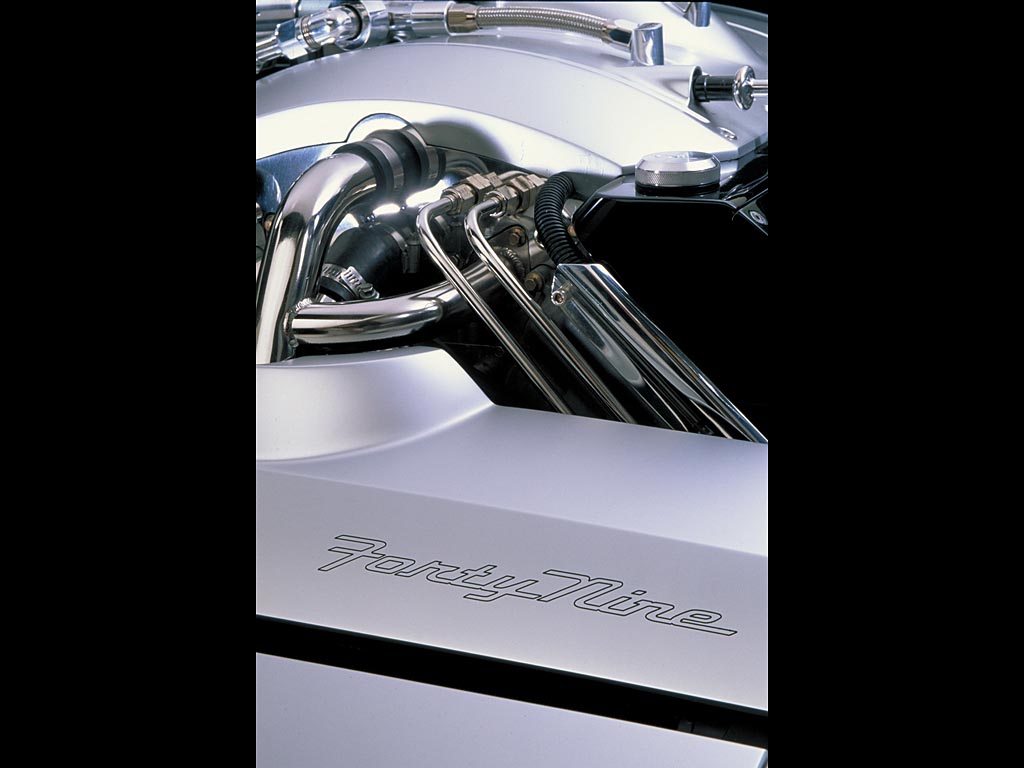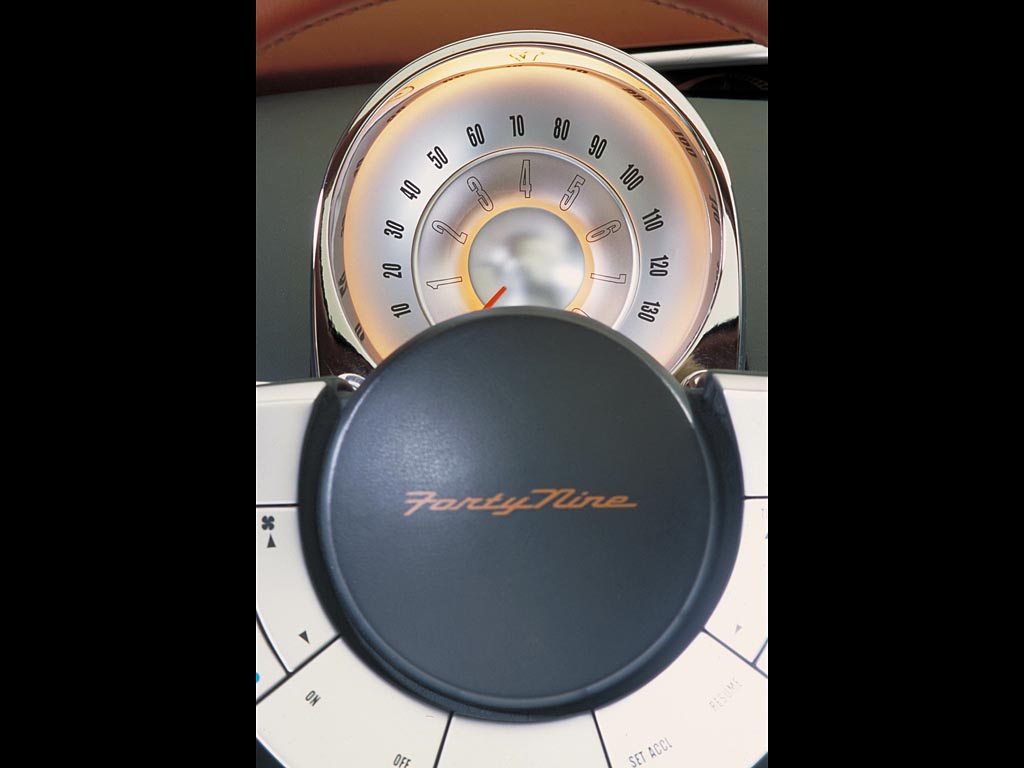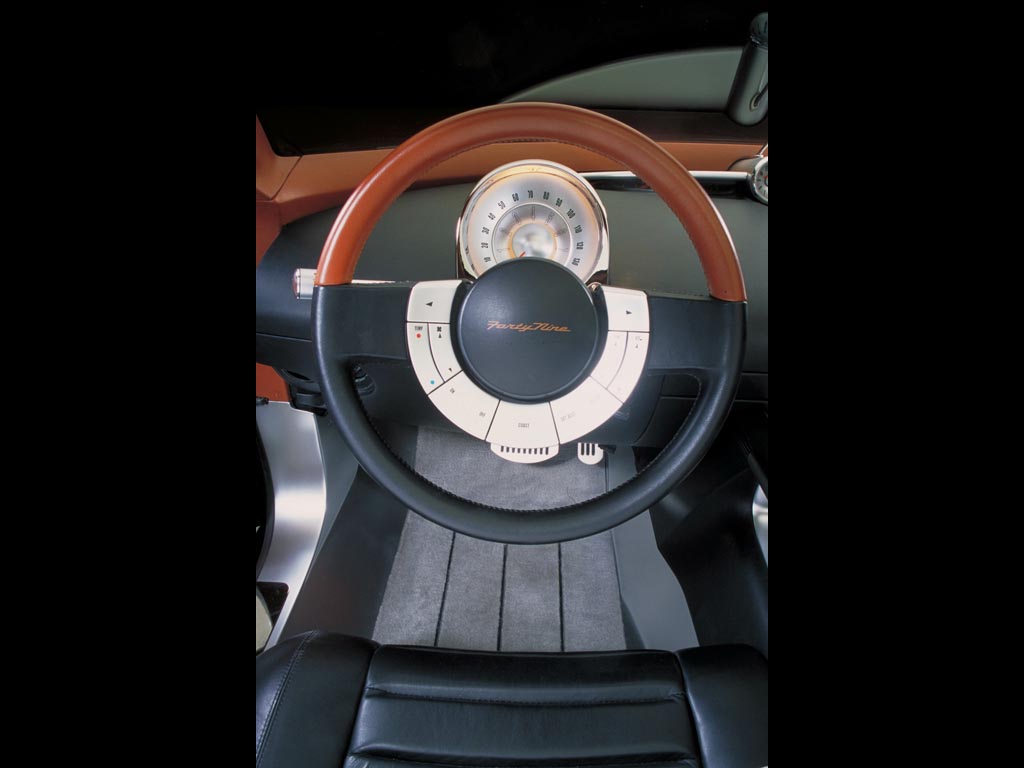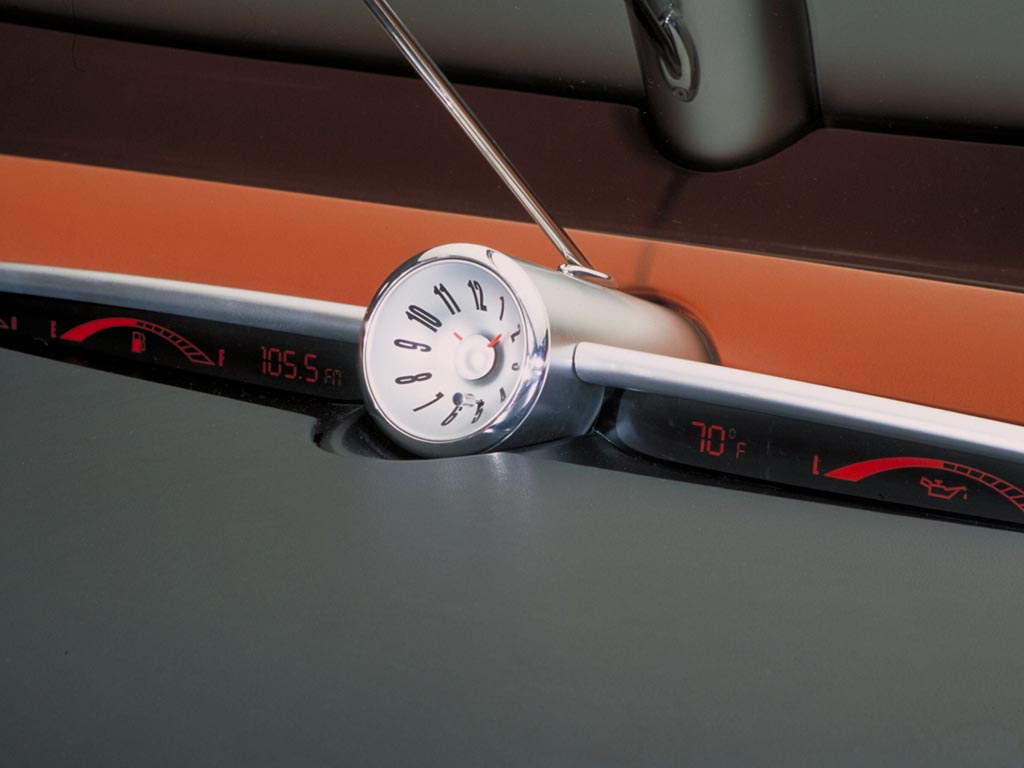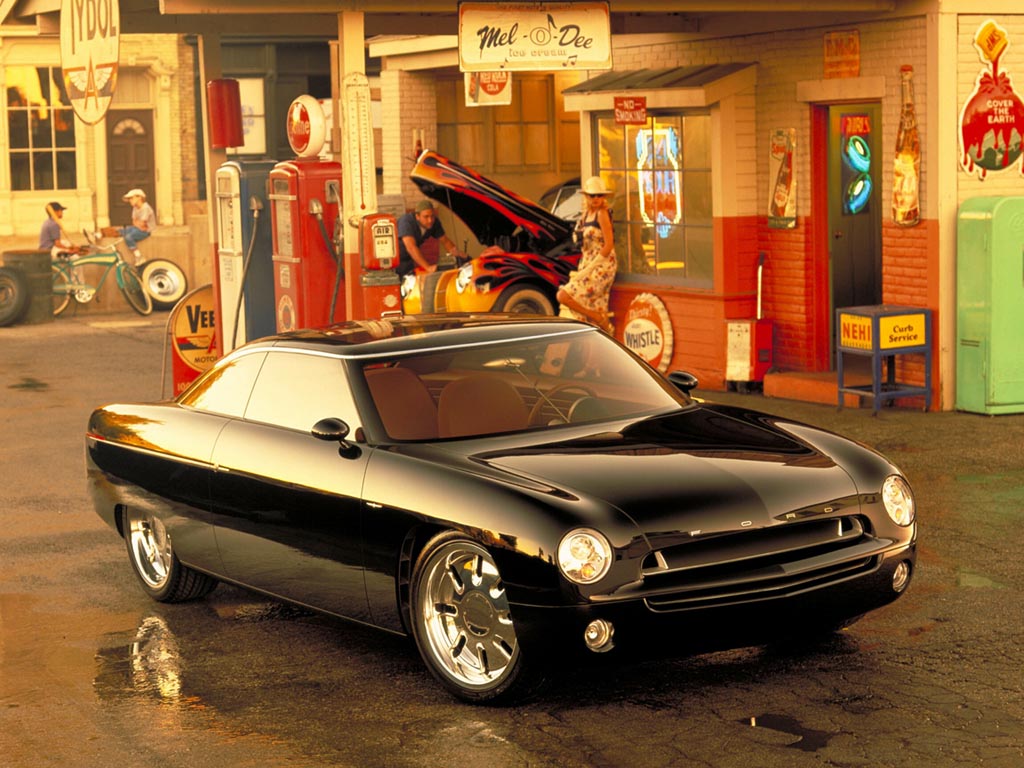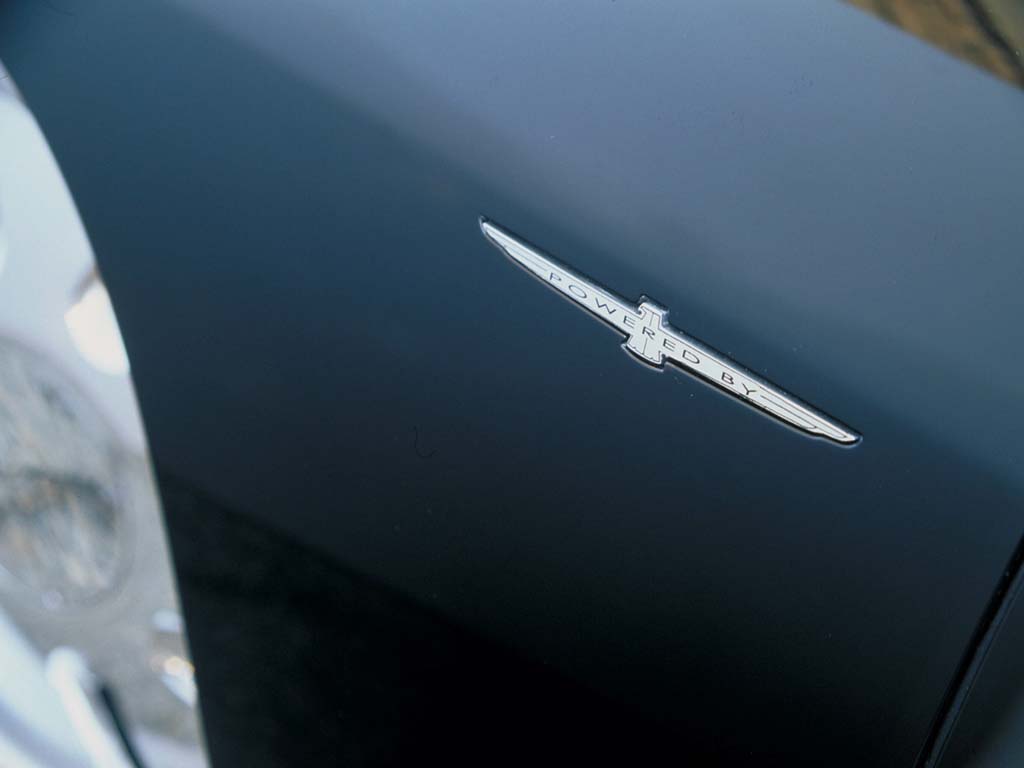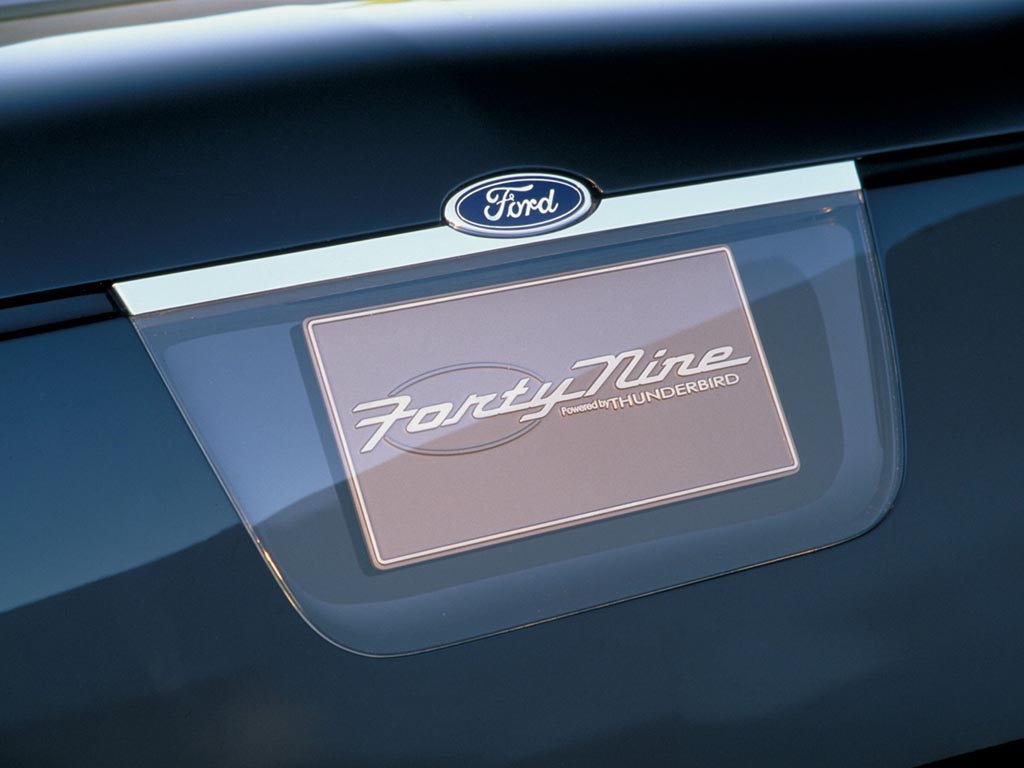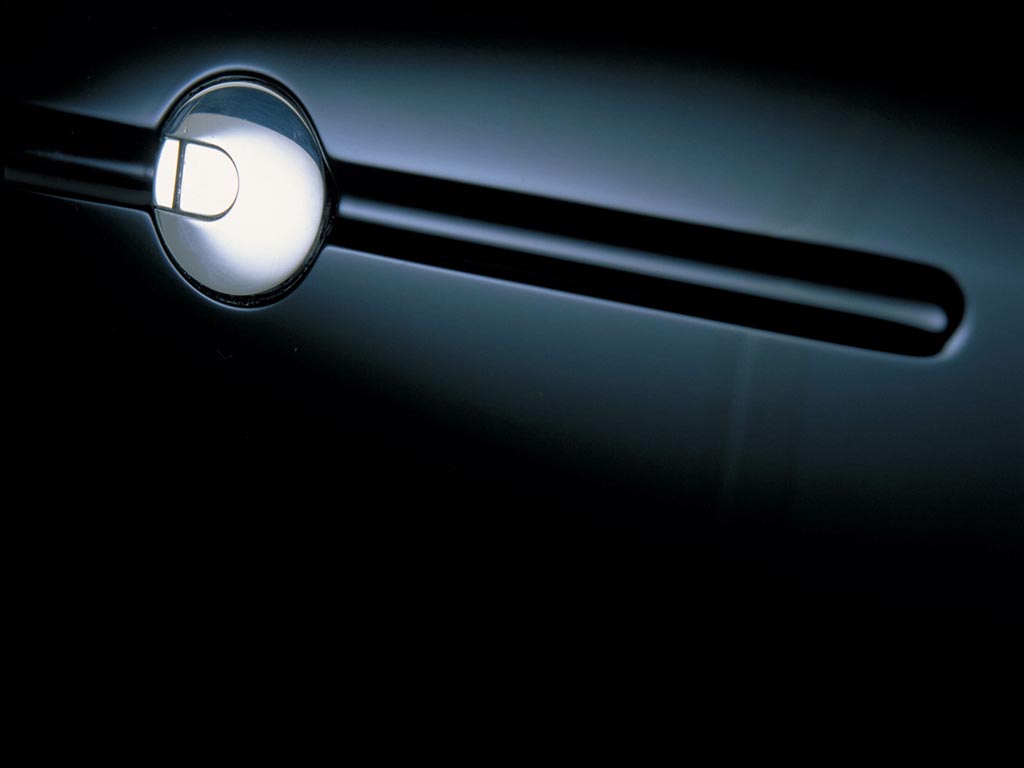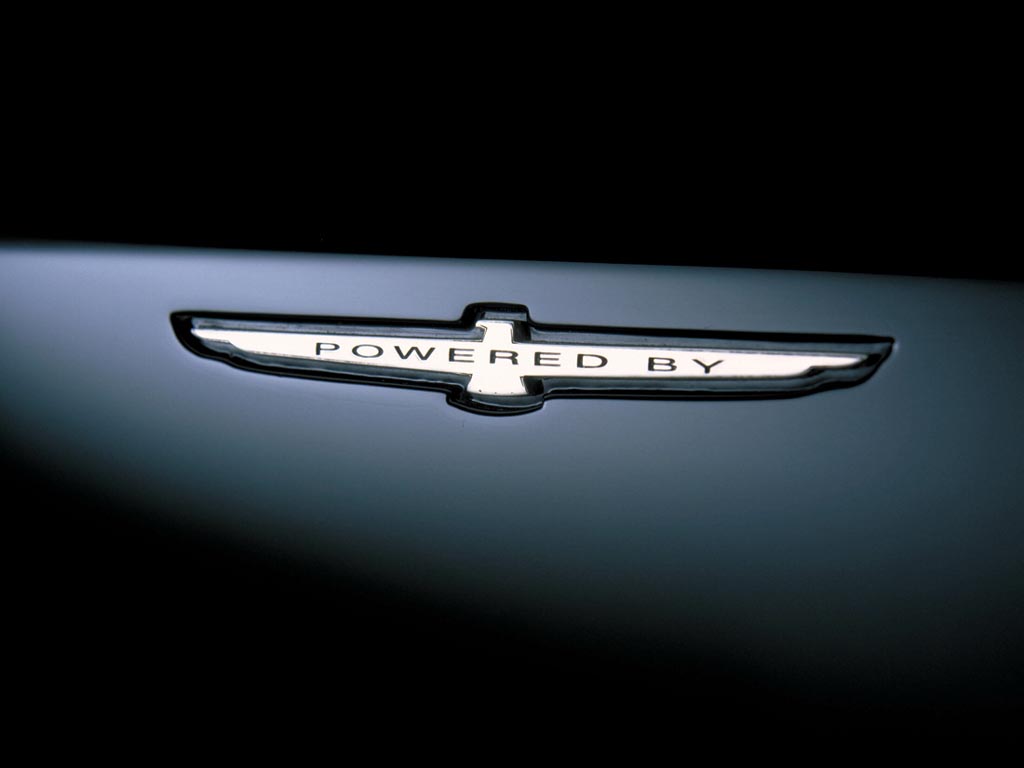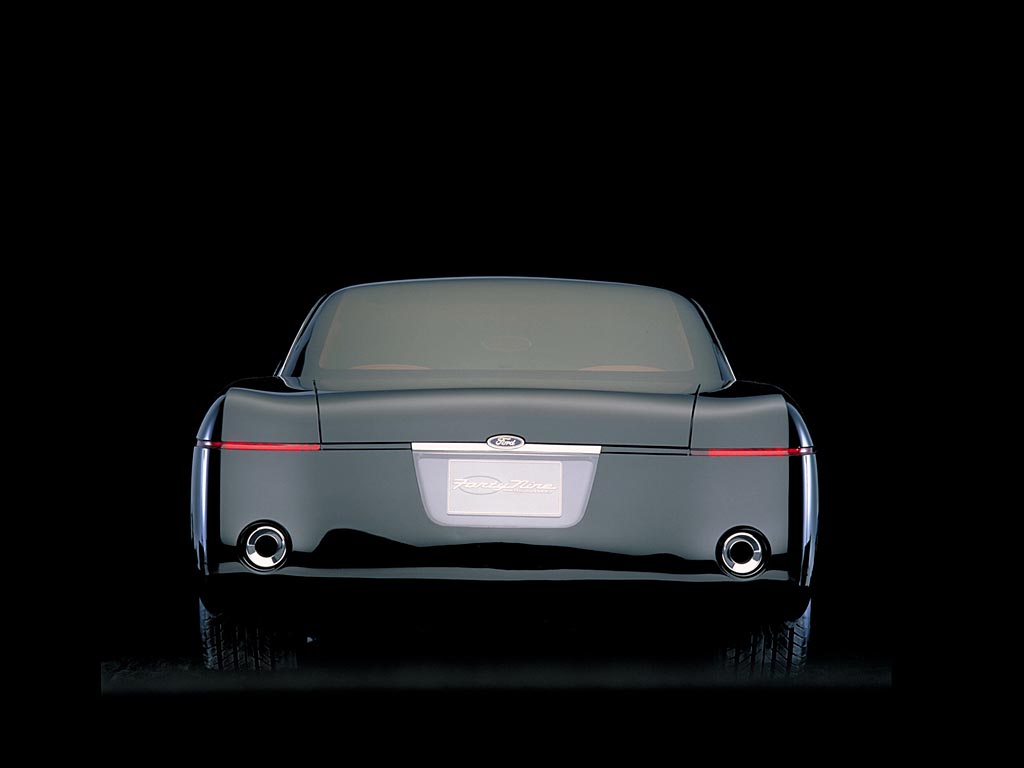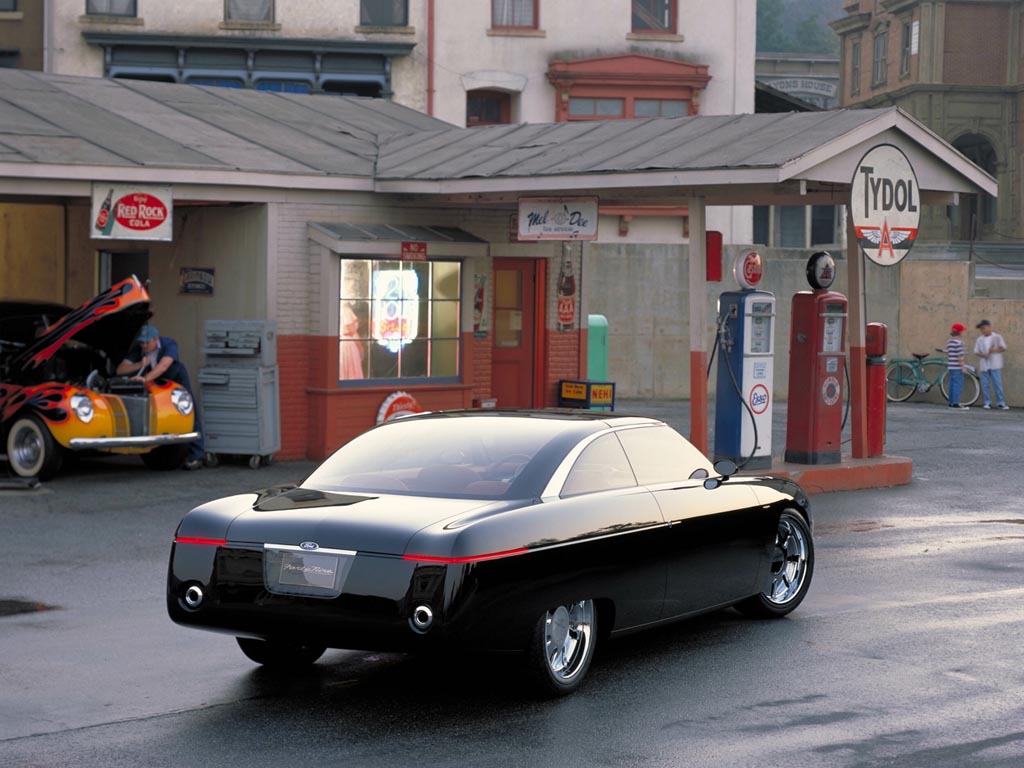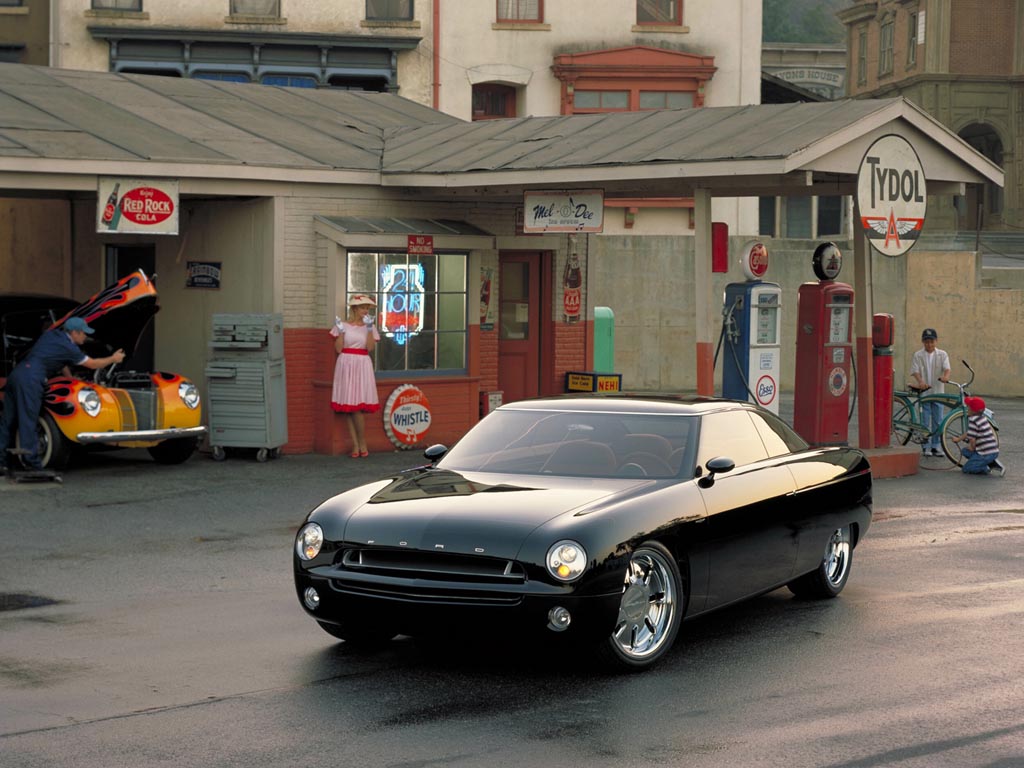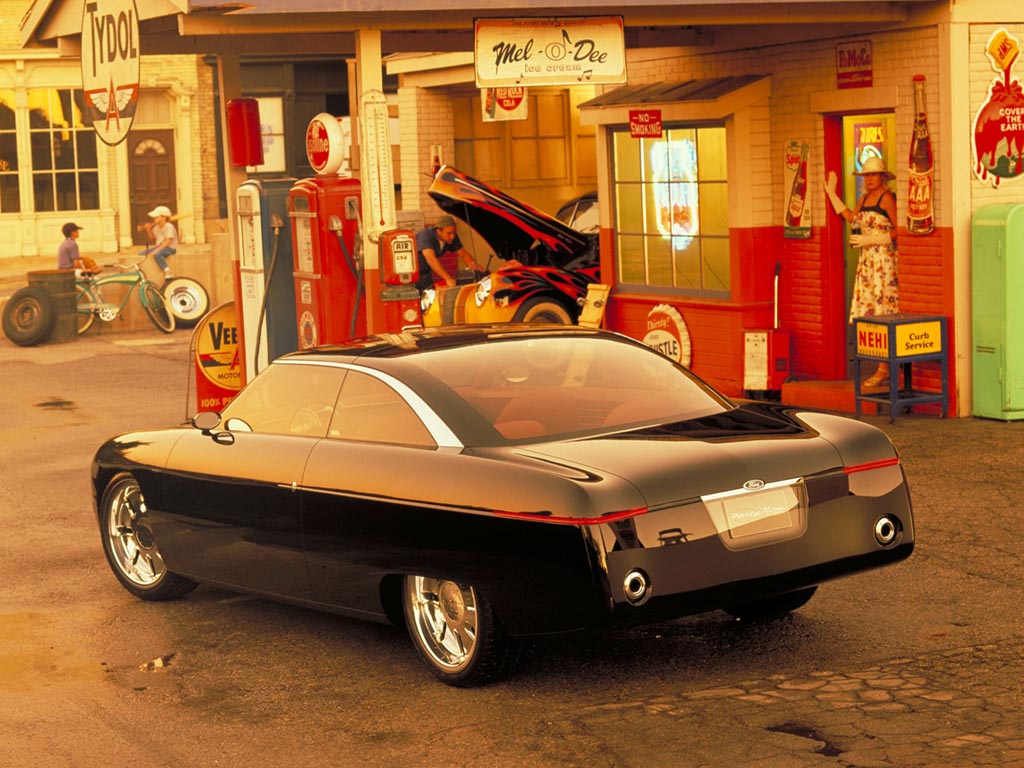2001 Ford 49 Concept
The year was 1949. After years of wartime sacrifice and sameness in durable goods, postwar America was ready for an automotive design revolution. The ’49 Ford, with radically new slab sides, integrated body and fenders, independent front suspension and rear quarter windows that opened, served as a symbol of optimism for the future.
Fifty years later, the Ford Forty-Nine custom coupe concept is taking Americans for a sentimental drag race down memory lane. It’s classic shape and brilliant proportioning underscore Ford’s ongoing commitment to design emotion into all its new cars and concepts.
To create the all-new Forty-Nine concept, Ford designers went back to the car’s roots – simple shapes, excellent proportions, clean body panels and modern conveniences.
The Forty-Nine concept’s hyper-smooth appearance is achieved by an all-glass upper body structure with concealed pillars and windshield wipers. The exterior finish is velvety black with bright chrome wrapping around the greenhouse and modest chrome accents elsewhere, such as its badging and 20-inch chrome wheels.
The Forty-Nine’s interior also is a modern interpretation of the original car’s simple design cues. A cantilevered, bench-style front seat is power-actuated. A floating center console runs the entire length of the interior, giving the impression of four-passenger bucket seating, while also serving to stiffen the vehicle’s structure. The floating console houses the five-speed shift lever and ventilation system for both front and rear seat passengers.
The interior color theme is two-tone: black and sienna. The black leather seats have sienna leather seat backs. Sienna leather also accents the upper door trim panels, instrument panel and package tray. The armrest is wrapped in charcoal leather. The lower door trim panels are finished in satin metallic silver. The silver carpet inserts are accented with chrome rails running the front to rear.
The car’s primary gauges are contained within a single round instrument binnacle, similar to the production ’49 and hot rods of the era. The analog tachometer takes center stage and is surrounded by the electronic speedometer. Audio and climate controls are presented in a flip-out panel located in the instrument panel, just ahead of the shifter. Their respective readouts, along with temperature, oil and fuel gauges, are displayed on either side of the centrally mounted clock, at the base of the windshield.
The rear view mirror is positioned along a prominent wind-split rod, which extends from the instrument panel to the windshield header. The rear-view mirror can be adjusted up or down along the length of the rod, which serves multiple purposes: it also houses the radio antenna, which extends up into the roof.
The design under the hood is an obvious extension of the overall design philosophy and pays homage to hot-rodders obsession with performance and appearance.
The engine bay is finished in satin black, stainless and chrome metal finishes. The radiator and its associated structure have been re-oriented to take full advantage of the design opportunities on the engine itself. The intake manifolds are finished in satin metal and the valve covers in gloss black, accented with polished stainless steel. Filtered interior air inlets are located at the trailing edge of the front wheel opening, and dual stainless steel exhausts penetrate the rear bumper fascia.
The engine bay is not only cosmetic: the chrome Powered by Thunderbird badge on the side fender gives a hint at the powerplant under the hood. And indeed, the concept is powered by a Thunderbird-sourced 3.9-liter, DOHC, 32-valve V-8, tuned to fit the car’s appearance and refined muscle.
Like all the Living Legends, the Forty-Nine reminds us of the love affair that generations have had with the open road and the automobile, says Mays. It remind us of a romance and a passion of the American touring car that is just as thrilling today as it was 50 years ago.
Story by Ford
In Detail
| submitted by | Richard Owen |
| built at | Detroit, Michigan, USA |
| engine | V8 |
| valvetrain | DOHC 4 Valves / Cyl |
| displacement | 3900 cc / 238.0 in³ |
| bhp/weight | bhp per tonne |
| driven wheels | Front Engine |
| f brake size | mm / in |
| r brake size | mm / in |
| gear ratios | :1 |


